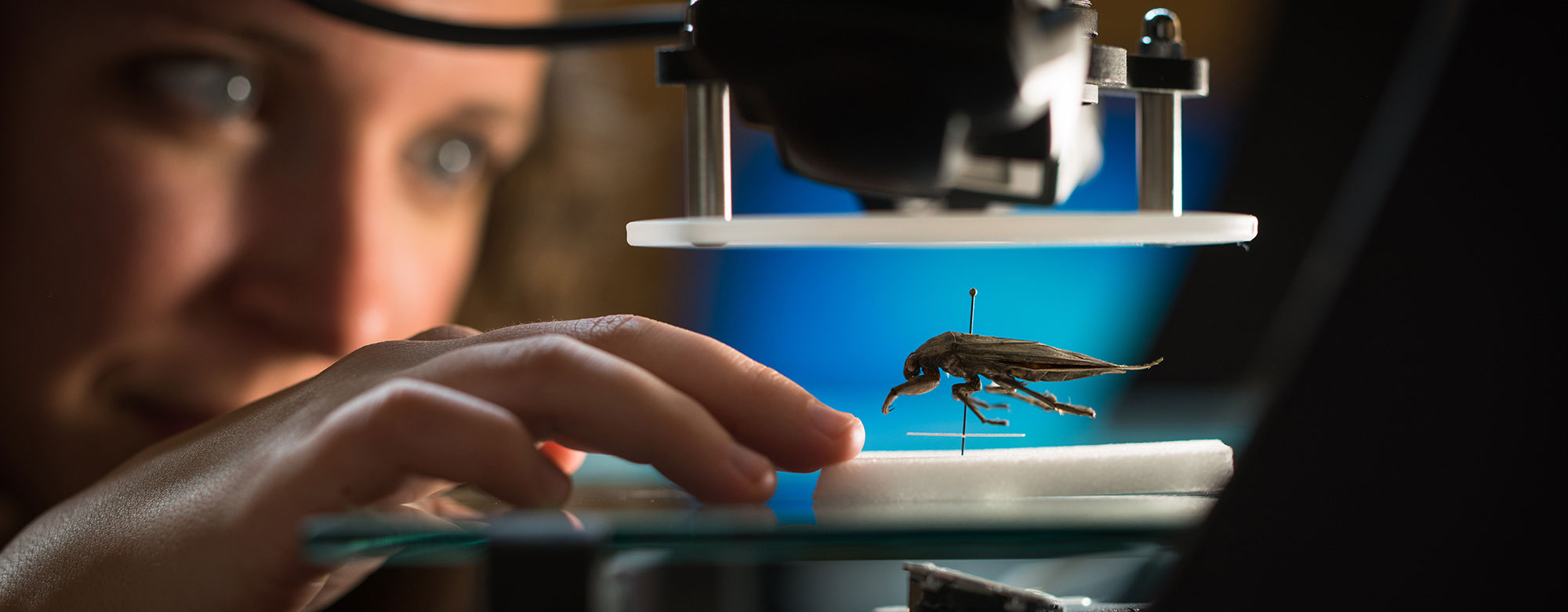You May Also Like
Curate This ‘We Do Still Exist, and We’re Thriving.’ Objects of Our Affection: GortGiving Forward:
Who:
Chen Young
What he supports:
Carnegie Museum of Natural History fieldwork and research
Why it matters:
“I want to help the section of invertebrate zoology and give back what it gave to me.”
Chen Young understands firsthand the importance of endowment support in sustaining the four Carnegie Museums, particularly in today’s uncertain environment. An entomologist, Young spent much of his 35-year career at Carnegie Museum of Natural History chasing crane flies around the world in the name of conservation science—critical work that requires ongoing funding.
Starting in the early 1980s, Young and a pair of longtime museum colleagues and fellow insect scientists, John Rawlins and Bob Davidson, collected together in some of the most endangered and undersurveyed corners of the world, including the Dominican Republic and Haiti. They had a single objective: document the insects in these vital regions before their biodiversity was transformed forever; before the bugs they didn’t even know existed yet were gone.
“When we were out in the field, we collected everything. Not just what was in our specialty areas,” says Young, who retired in 2015 as associate curator emeritus of invertebrate zoology. “We were thinking big and for the future.”
Young has never stopped thinking big, recently establishing the endowed Drs. James Bossert and Chen Young Research Fund in support of ongoing fieldwork and research in the museum’s invertebrate zoology section he helped build. It’s named for Young and his biggest personal supporter, his late husband, James (who went by Adam), and seeded through qualified charitable distributions from a taxable IRA.
Over the course of his museum tenure, Young and his colleagues doubled the museum’s insect collection and placed it on the world stage, encouraging its widespread use by other scientists.

Chen Young, collecting crane flies in the Dominican Republic, supports ongoing museum research and fieldwork.
Young wants to ensure that the momentum continues. “We always thought about creating the collection for the next generation. Because we don’t really know what is going to change, what will be gone, we needed to collect it while we could, and those conditions still exist,” says Young, who left his native Taiwan in the mid-1970s to attend graduate school at the University of Kansas. It was there he earned his master’s and doctorate degrees and fell for his two great loves—crane flies and Adam—before relocating to Pittsburgh.
“Carnegie Museum of Natural History was my first and only job. I was very lucky,” he says. “Funding to get out into the world and collect, for research, and to care for the collection can be precarious,” he continues. “I want it to be available for the future. Museum collections are invaluable—they include not just DNA but the whole specimens. I want to help the section of invertebrate zoology and give back what it gave to me.”
In addition to supporting fieldwork and research, Young has also set up a planned gift to ensure that the museum is able to conserve, collect, and acquire insects for the collection in perpetuity.
“I really appreciated and enjoyed my time at Carnegie Museum of Natural History. For me, it was a dream come true,” Young says, a dream he’s now sharing with tomorrow’s scientists. And for his second act, he’s newly involved with his local conservancy group in Palm Springs, California. So far, he says, it’s been gratifying and fun. “I’m in the desert now and there are all new bugs to discover. I’m still learning!”
To learn more about giving opportunities at Carnegie Museums, contact Beth Brown at brownb@carnegiemuseums.org or 412.622.8859.
Receive more stories in your email
Sign upTags:
Science & Nature
